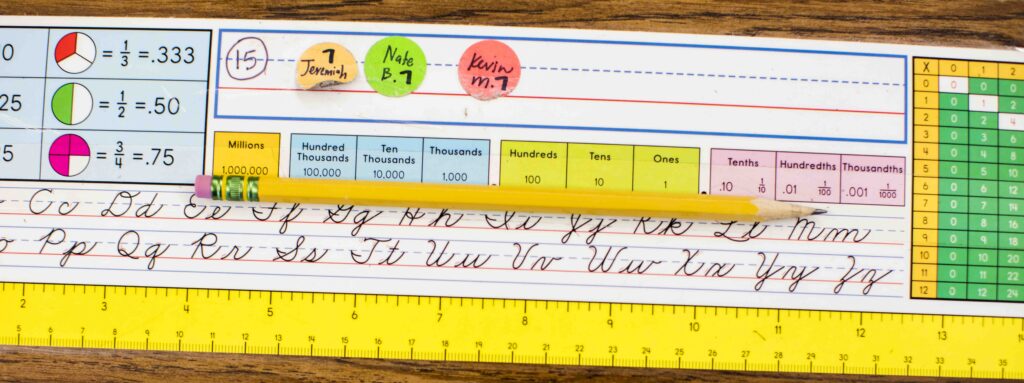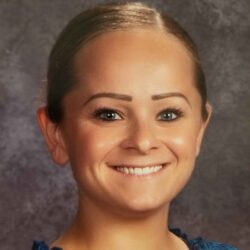The Opportunity Myth rang true for my school, Risley International Academy of Innovation in Pueblo, Colorado, where I’m an Assistant Principal in charge of instruction. Not only were the challenges familiar; it also provided a road map to get our students and us where we want to be. We recently adopted new, more rigorous mathematics and English Language Arts curriculum and the report inspired us to focus on pairing that grade-level content with a renewed focus on strong instruction. Specifically, we used the Instructional Strategies that Push Students to Own the Thinking resource from The Student Experience Toolkit, and each teacher picked a new instructional strategy to try. Without prompting, they began inviting me into their rooms and emailing me pictures of the new strategies in action, excited about the learning and engagement they saw.
That inspired me to start the #ShiftTheLift challenge. Beginning with the math department, this entailed one team emailing pictures and notes to the entire staff showing how they were pushing students to own the thinking—then challenging another team to step up and do the same. I sat down with Peg Meyers, a sixth-grade science teacher, and Sabrina Gonzales, an eighth-grade math teacher, to discuss their experience with #ShiftTheLift.
What was your initial reaction to reading The Opportunity Myth?
Peg: When I read the report, it made me reevaluate my own beliefs about my teaching and my students’ abilities. It made me ask myself that deeper question: “Is what I'm doing truly preparing my students for the future?”
Sabrina: For me, it was really reassuring to see that high expectations have the most significant impact on achievement. It’s a lot of work; having high expectations doesn’t just happen. You have to have that conversation with kids and let them know what you expect—and that they can do it.
Can you talk more about what “high expectations” means to you? What does it look like in action?
Sabrina: High expectations means that even though some of my students are not performing at grade-level, I expect that if I provide them with challenging content and instruction to match, they can get there. I start every lesson by talking about the objective for that day, and let them know that my expectation is by the end of the day, every student will be able to meet that objective. To make that happen, throughout the lesson I circulate the classroom and check in with each student to see where they are. I ask what they need to be able to meet our objective and let them know they are on the right track.
Peg: It’s similar in my classroom. I always circle back around at the end of the hour and stamp their learning by saying, “Okay this is what we said we were going to be able to do? Can we all do that now?”
How was it participating in the #ShiftTheLift project? Sabrina, do you want to start since our team kind of created it?
Sabrina: Sure. I chose to focus on Strategy 7: Facilitate academic discussion and feedback among students. I gave them a task that was unfamiliar to them. First, they each had a chance to try the task on their own. Then, I divided them up into groups where they all worked together to present their solution to the task on a whiteboard.
They pushed each other, saying things like, “I'm not sure what you mean, can you explain that again?” They were really eager to show their work on the whiteboard. Within the groups, I didn't establish any roles, like “note-taker” or anything like that, but they did that on their own. So, there’s also a classroom management benefit from giving students the chance to own their learning.
It was so cool watching them work. Hearing the conversations they were having using academic vocabulary—it showed me that much more of the content was registering with them than I’d thought. They expect more out of themselves now and understand it’s not acceptable for only a few students in the class to understand the content. So, they're looking out for each other more now, too.
What was it like for you, Peg?
Peg: I teach sixth-grade science, and my team got impatient waiting for somebody to challenge us, so we just decided one morning that we were going to do it.
At first, when I stepped back, I found myself wanting to swoop in and help my students. But instead, I forced myself to let them do the work on their own. I could not believe what I saw. They were reading, they were understanding, and they were showing their understanding through writing—in science class! They were leading the conversation, not me. I was just the facilitator in the room. They were really doing the work, and they loved it. They were highly engaged. They were excited. That was probably one of my best days of teaching at Risley.
Any advice for other teachers who want to #ShiftTheLift?
Sabrina: Feedback is crucial. I always ask administrators, coaches, and other teachers for insight into my instruction. I also make a point to ask students for feedback, since they’re the ones doing the learning and have the best idea of what’s working and what’s not. For example, sometimes when I’m trying something new in my classroom, I do something I call a “fishbowl,” where I ask a small group of students to try out a lesson in the middle of the classroom and have all the other students sit in a circle around them and observe.
Afterward, I ask all the kids for feedback. I ask if the lesson looks like something they’d want to do, and what I should change to make it something they’d enjoy and learn from. I also meet with kids individually after a “fishbowl” and ask for their feedback, as some students communicate better one-on-one or with a little more time to reflect.
Peg: My advice to teachers? Trust your students to learn. I'll be honest. There are days where I feel like, “Oh my gosh, what more can you put on me? I teach every day. I'm here every day. I am covering during my plan time for teachers who aren't here. I am doing my lesson plans. It feels like so much, and now you want me to shift the lift?” But, the amazing thing about doing that is it actually lightens my load. I am not constantly thinking, “How am I going to teach this so that every single student can learn it?” Instead, I am allowing them to learn, and then I get to come in afterward and clear up any misconceptions they might have. But I don't have to think of ways to teach the content I want them to learn. They are learning more than I am teaching. I don't have to try to “entertain” students into learning or think of 10 different ways to say the same thing. I am free from the old teaching style where I am telling them information in as many ways as I can. I allow students to access information from text, as well as short media clips. After students have created their own understanding, I come in and shore up any misconceptions. Many times, their questions lead back to the original intent of the lesson.
Don't get me wrong; I still spend loads of time planning for instruction. It’s just different now. I look for text and clips that give information that I want students to understand. I create exemplary responses to assignments and questions that I can refer to as we go through the process as a class. My time is spent planning so that during class time students can do the heavy lifting of learning as I support them in their journey.
By shifting the lift, we’re not giving ourselves more work, but we are changing the quality of the work that we're putting in before we get into our classrooms. So, instead of just lesson planning around the content and what I want to teach, I plan around what I want my student to learn, and what I can do to put the onus on them to get there.




